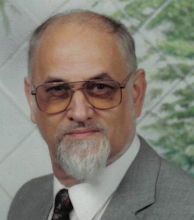 As a teacher of many years experience I thought that I knew all about formative assessment. After all, I had been doing it for ages with Design & Technology coursework well before computers came into my life! And all of this became so much easier with my beloved network of computers.
As a teacher of many years experience I thought that I knew all about formative assessment. After all, I had been doing it for ages with Design & Technology coursework well before computers came into my life! And all of this became so much easier with my beloved network of computers.Yes, I knew that at the start of a course I would assess what my students knew about my proposed content and activities. I was well drilled in defining 'previous knowledge/experience' in my lesson plans, and yes, I would modify my plans according to the initial 'survey'.
Similarly, at times during the course I would attempt to inform my students as to their progress and what their individual strengths and weaknesses might be. But that was about all. However, it was not until reading W.J Popham's book, 'Transformative Assessment' that I understood, for the first time, just how much I had been missing out on.
How do I know when and what to assess? Will it be appropriate to my long-term planning and booking of resources etc? Perhaps the first thing I learnt from his book is that if I was not to totally overdo this assessment thing and make myself a nervous wreck I first needed to plan when to assess in terms of my ongoing delivery, teaching and learning styles.
The second thing I learnt about formative assessment is the need for self-control. In this modern 'instant fix' working lifestyle, students would soon latch on to the fact that at any time of asking they would expect immediate answers, day in day out and every evening. 'Formative overload' would soon render any conventional teaching impossible. Yes, as soon as students discover the advantages of 24/7/365 access the system would soon overload and self-destruct.
However, the e-Portfolio can lend some sense of sanity and organisation. Instead of Instant Messaging or Tweeting, the e-Portfolio can provide a scaffold for students to follow their suggested plan for formative assessments with places for feedback as and when planned rather than on instant demand.
Understanding the collaborative uses of the e-Portfolio, it soon becomes obvious that the symbiotic relationship of e-Portfolio and formative assessment is not just to be used by students. This culture of formative assessment, as used in teacher-student relationships, can so easily be used in both departmental or whole-school assessment and planning. Similarly, the outcomes of formative assessments can be communicated through personal PDP and institutional e-Portfolios.
Once teachers and lecturers have learnt the basic skills of e-Portfolio management a synergy soon develops between students, even the youngest of pupils and their teachers. 'No one, having put their hand to the plough, turns back' from e-Portfolios. If never before, they seemlesly become lifelong and lifewide tools of learning.
Look at this list of some of the benefits of using an e-Portfolio and think about how many of these points are also highly beneficial to the mutuality of formative assessment.




No comments:
Post a Comment